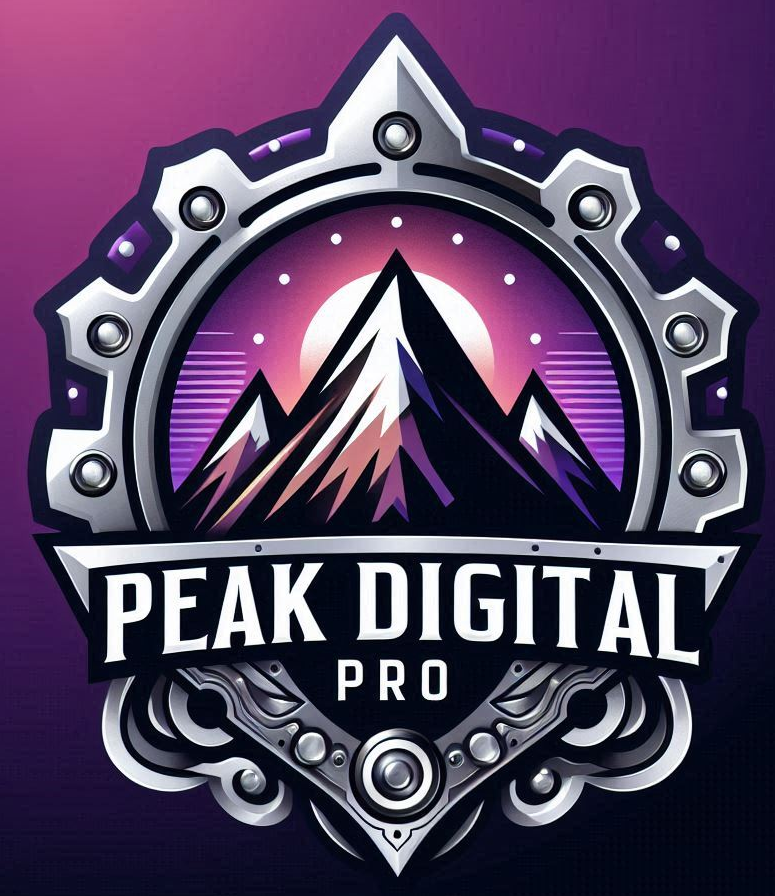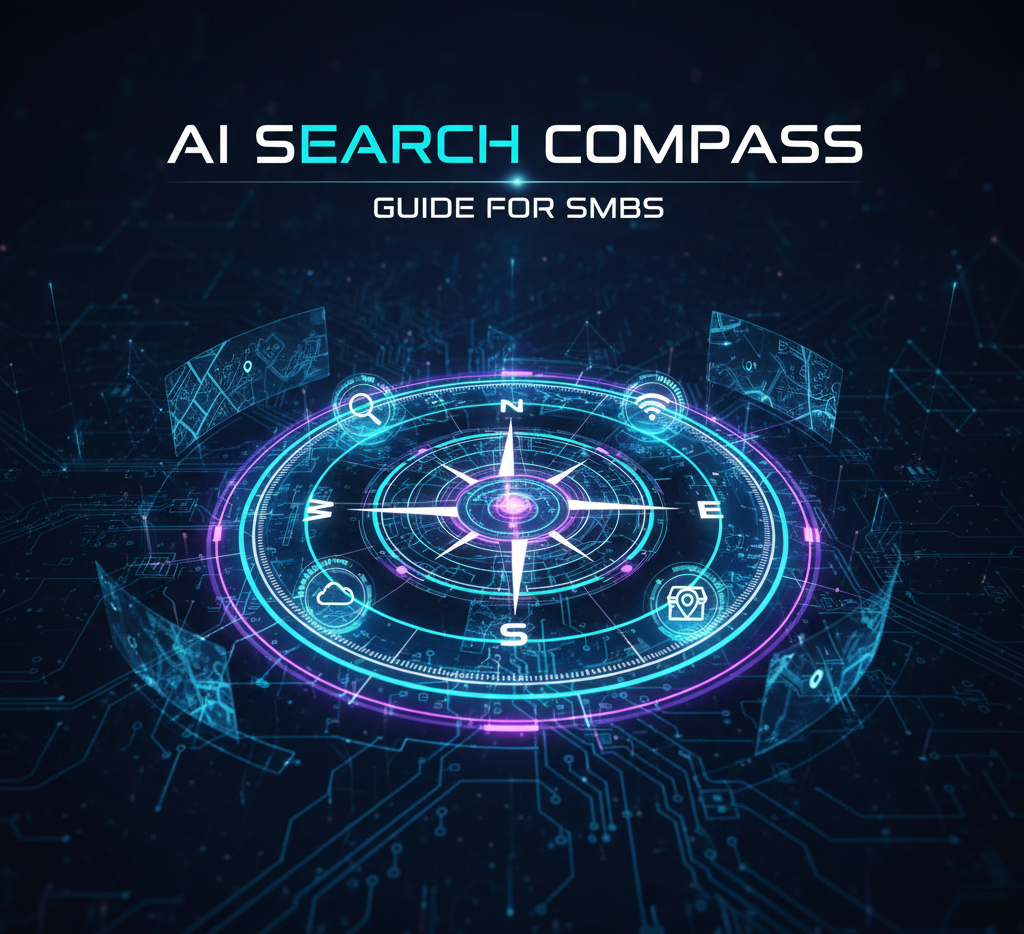Master Content Writing for SEO: Achieve Top Rankings
Most people think SEO content writing is all about keywords and Google rankings. Yet here’s a shocker. Over 90 percent of online content gets absolutely zero traffic from Google. So the real secret is not just finding keywords but building a complete step-by-step system that matches what your audience wants with what search engines reward. Get ready to rethink how effective content is actually made.
Table of Contents
Below is an overview of the six main steps for mastering content writing for SEO. Refer to this step summary to quickly see the process, primary activity, and intended outcome for each stage.
| Step | Main Activity | Key Outcome |
|---|---|---|
| 1 | Analyze audience & keywords | Clear understanding of audience and keyword priorities |
| 2 | Develop strategy & outline | Structured content plan addressing user intent |
| 3 | Create SEO content | High-quality, optimized, engaging content |
| 4 | Optimize for SEO | Enhanced search visibility through technical and content optimization |
| 5 | Publish & promote | Content distribution and increased audience reach |
| 6 | Measure & adjust | Ongoing improvement based on performance data |
Quick Summary
| Key Point | Explanation |
|---|---|
| 1. Understand your target audience | Create detailed audience personas to align content with their needs, interests, and search behaviors. |
| 2. Conduct thorough keyword research | Use tools to find relevant long-tail keywords that reflect user intent and prioritize them in your content strategy. |
| 3. Develop a structured content strategy | Organize keywords into thematic clusters and outline content types that address user intent, ensuring clarity and purpose. |
| 4. Optimize for search engines | Implement on-page SEO techniques including strategic keyword placement, effective metadata, and technical optimizations to enhance visibility. |
| 5. Track performance and adjust strategies | Use analytics to measure key metrics, interpret data trends, and continuously optimize content for better engagement and SEO success. |

Step 1: Analyze Your Target Audience and Keywords
Successful content writing for SEO begins with a deep understanding of your target audience and the keywords that connect them to your content. This critical first step involves creating a comprehensive strategy that aligns your content with the specific needs, interests, and search behaviors of your potential readers.
To start, you’ll want to develop detailed audience personas that go beyond basic demographics. Consider the pain points, motivations, and typical online search patterns of your ideal readers. This means diving into their professional challenges, personal goals, and the specific language they use when searching for solutions. Google Analytics and social media insights provide valuable data to help you build these personas with precision.
Keyword research forms the backbone of your content strategy. Use tools like Google Keyword Planner to uncover the search terms your audience actually uses. Look beyond high-volume keywords and focus on long-tail keywords that demonstrate specific intent. These more targeted phrases often have less competition and higher conversion potential. Pay attention to the search intent behind each keyword:
- Informational keywords : Queries seeking knowledge or answers
- Transactional keywords : Terms used when someone is ready to make a purchase
- Navigational keywords : Searches for specific brands or websites
Create a spreadsheet that categorizes your discovered keywords by relevance, search volume, and difficulty. This will help you prioritize which keywords to target in your content strategy. Remember that keyword research is not a one-time task but an ongoing process. Search trends evolve, and so should your keyword strategy.
Verify the success of your research by checking if you can answer these key questions:
- Do you understand who your target audience is?
- Have you identified a comprehensive list of relevant keywords?
- Can you map keywords to specific content topics?
- Do you understand the search intent behind your chosen keywords?
By completing this step thoroughly, you’ll create a solid foundation for content that not only ranks well but truly resonates with your target audience. Learn more about audience targeting strategies to refine your approach and maximize your content’s impact.
Here is a checklist table to help you verify the thoroughness of your audience and keyword analysis. Use this table to ensure nothing critical is missed before moving to the next step.
| Verification Item | Description | Complete? |
|---|---|---|
| Target Audience Identified | Have you developed detailed personas for your ideal readers? | [ ] |
| Keyword List Compiled | Have you generated a comprehensive list of relevant keywords? | [ ] |
| Keyword Mapping | Can you assign keywords to specific content topics? | [ ] |
| Search Intent Understood | Do you understand the intent behind each selected keyword? | [ ] |
Step 2: Develop a Content Strategy and Outline
After analyzing your target audience and keywords, the next crucial step is developing a comprehensive content strategy that transforms your research into a actionable plan. This stage is about creating a roadmap that guides your content creation process, ensuring every piece of content serves a specific purpose and resonates with your target audience.
Begin by clustering your discovered keywords into thematic content buckets . These clusters represent broader topics that align with your audience’s interests and search behaviors. For each cluster, brainstorm content formats that will best address user intent. This might include in-depth blog posts, comprehensive guides, quick how-to articles, or even video scripts. The key is matching the content type to the specific information your audience seeks.
Your content outline should include critical components that enhance both user experience and search engine optimization. Create a spreadsheet or document that maps out each planned piece of content with specific details:
- Target keyword focus
- Content type and format
- Estimated word count
- Primary audience pain point being addressed
- Potential internal and external linking opportunities
When developing your outline, prioritize content depth and comprehensiveness . Search engines favor content that thoroughly explores a topic, so aim to create resources that provide more value than competing pages. This means going beyond surface-level information and diving deep into nuanced explanations, practical examples, and actionable insights.
Consider implementing a content marketing calendar to maintain consistency and strategic alignment. This tool helps you track content production, ensure regular publishing, and maintain a balanced approach to covering different topics and keywords.
Verify the success of your content strategy by checking if you can confidently answer these questions:
- Have you created a clear content roadmap?
- Does each planned piece of content serve a specific purpose?
- Can you demonstrate how the content addresses audience needs?
- Have you identified potential challenges in content creation?
By meticulously developing your content strategy and outline, you’re setting the foundation for SEO success that goes beyond mere keyword placement. Your content will be purposeful, engaging, and primed to attract and retain your target audience.
Step 3: Create High-Quality SEO Content
Transforming your content strategy into actual written content requires a strategic approach that balances search engine optimization with genuine reader value. The goal is to craft content that not only ranks well but truly engages and informs your target audience.
Keyword integration is critical, but it must feel natural and seamless. Avoid keyword stuffing by weaving your target keywords into the content in a way that reads smoothly and provides genuine value. Your primary focus should be on creating comprehensive, authoritative content that thoroughly addresses the user’s search intent. This means going beyond surface-level information and providing deep, actionable insights that demonstrate your expertise.
Structure plays a crucial role in both readability and SEO performance. Use clear, descriptive headings that incorporate your target keywords. Break up your content into digestible sections with subheadings, short paragraphs, and strategic formatting. Include visual elements like images, infographics, or videos to enhance engagement and provide additional context. Each piece of content should have a clear hierarchy that guides readers through the information logically.
Your content creation process should include these essential elements:
- Unique and original perspective
- Comprehensive coverage of the topic
- Clear, conversational language
- Actionable insights and practical advice
To maximize your content’s SEO potential, pay special attention to on-page optimization . This includes crafting compelling meta descriptions, using alt text for images, and creating SEO-friendly URLs that clearly describe the content. Implement internal linking to connect related content and help search engines understand the context and relationships between your pages.

Verify the quality of your content by checking these key criteria:
- Does the content thoroughly answer the user’s potential questions?
- Have you incorporated keywords naturally?
- Is the content easily readable and well-structured?
- Does it provide unique value compared to existing content?
Remember that high-quality SEO content is an ongoing process. Continuously refine your approach, stay updated on search engine algorithm changes, and always prioritize creating genuinely helpful content that serves your audience’s needs.
Step 4: Optimize Your Content for Search Engines
Content optimization represents the critical bridge between creating high-quality content and achieving top search engine rankings. This step transforms your carefully crafted content into a search-friendly masterpiece that attracts both algorithms and human readers.
Technical optimization begins with strategic keyword placement that feels natural and purposeful. Focus on incorporating your primary and secondary keywords in key locations: the title tag, first paragraph, headings, and throughout the content without disrupting readability. Google’s algorithms prioritize content that demonstrates expertise and relevance, so ensure your keywords are contextually integrated rather than mechanically inserted.
Metadata plays a crucial role in search engine optimization. Your meta description should be a compelling 150-160 character summary that includes your primary keyword and entices users to click. Create unique title tags for each page that accurately represent the content while incorporating targeted keywords. Pay special attention to header tags (H1, H2, H3), using them to structure your content hierarchically and signal topical importance to search engines.
Implement these critical optimization strategies:
- Use descriptive, keyword-rich alt text for images
- Create internal links to related content
- Optimize page loading speed
- Ensure mobile responsiveness
Beyond technical elements, focus on content comprehensiveness . Search engines favor in-depth content that thoroughly addresses user questions. This means creating resources that go beyond surface-level information, providing detailed explanations, practical examples, and unique insights. Explore advanced content optimization techniques to elevate your SEO strategy.
Verify your content optimization by checking these key indicators:
- Does the content answer user search intent comprehensively?
- Are keywords naturally integrated?
- Have you optimized technical SEO elements?
- Is the content structured for easy reading and navigation?
Remember that SEO optimization is an ongoing process. Regularly review and update your content to maintain its relevance and search engine performance. By treating optimization as a continuous improvement cycle, you’ll consistently enhance your content’s visibility and effectiveness.
Step 5: Publish and Promote Your Content Effectively
Publishing your meticulously crafted content is just the beginning of your SEO journey. Effective promotion transforms your content from a hidden gem into a powerful traffic-generating asset that reaches and engages your target audience across multiple channels.
Content distribution requires a strategic multichannel approach. Start by scheduling your content publication during peak engagement times for your specific audience. Social media platforms offer incredible opportunities to amplify your content’s reach. Share your articles on LinkedIn, Twitter, and Facebook, crafting platform-specific captions that highlight the unique value of each piece. Use relevant hashtags to increase discoverability and encourage your network to share and engage with the content.
Email marketing remains a potent tool for content promotion. Build a segmented email list and create targeted newsletters that showcase your latest content. Craft compelling subject lines that spark curiosity and provide clear value propositions. For businesses looking to expand their reach, consider leveraging professional networking platforms and industry-specific forums where your target audience actively seeks information.
Implement these essential promotion strategies:
- Utilize social media scheduling tools
- Engage with comments and shares
- Repurpose content into multiple formats
- Collaborate with industry influencers
Tracking and analytics are crucial for understanding your content’s performance. Use tools like Google Analytics to monitor key metrics such as page views, time on page, and user engagement. Learn more about increasing your online visibility to refine your promotional strategies continuously.
Verify the success of your content promotion by checking these indicators:
- Are you reaching your target audience?
- Is the content generating meaningful engagement?
- Are you seeing an increase in website traffic?
- Have you received any backlinks or social shares?
Remember that content promotion is an ongoing process. Continuously experiment with different promotional techniques, analyze your results, and adapt your strategy. The most successful content marketing approaches are those that remain flexible and responsive to audience feedback and emerging digital trends.
Step 6: Measure Performance and Adjust Strategies
Measuring content performance transforms your SEO efforts from guesswork into a precise, data-driven approach. This final step is about understanding how your content performs, identifying areas for improvement, and making strategic adjustments that continuously enhance your search engine rankings and audience engagement.
Performance tracking begins with setting up comprehensive analytics tools. Google Analytics provides a robust framework for monitoring critical metrics that reveal your content’s true impact. Focus on key performance indicators like organic traffic, bounce rate, average time on page, and conversion rates. These metrics offer deep insights into how users interact with your content and where potential optimization opportunities exist. Pay special attention to which pages attract the most organic traffic and which keywords are driving meaningful engagement.
Data interpretation requires a nuanced approach. Look beyond surface-level numbers and understand the story behind the statistics. For instance, a high bounce rate might indicate that your content isn’t meeting user expectations, while low time-on-page could suggest that your content needs more engaging formatting or deeper information. Regularly compare your content’s performance against your initial objectives and be prepared to make strategic pivots based on your findings.
Implement these critical performance measurement strategies:
- Set up custom dashboards in Google Analytics
- Track keyword ranking changes
- Monitor user behavior flow
- Compare content performance across different channels
Continuous optimization is the key to long-term SEO success. Explore advanced strategies for understanding content marketing ROI to refine your approach. Create a quarterly review process where you analyze performance data, identify top-performing content, and develop strategies to replicate that success across other pieces.
Verify your performance measurement effectiveness by checking these indicators:
- Have you established baseline performance metrics?
- Are you tracking meaningful, actionable data?
- Can you identify clear trends in content performance?
- Are you making data-driven content strategy adjustments?
Remember that SEO is an iterative process. The most successful content strategies are those that remain flexible, continuously learn from performance data, and adapt to changing search engine algorithms and user behaviors.
Ready to Make Your Content Work Harder for SEO Results?
Struggling to connect your audience research and keyword strategy to actual rankings or business growth? If crafting high-quality content feels overwhelming or you are tired of inconsistent results, you are not alone. Many businesses find it challenging to move from SEO theory to a complete strategy that actually drives local leads and sales. If you want your content writing to power real business results and not just pageviews, it is time for a solution tailored to your goals.

At Peak Digital Pro , we turn expert insights from articles like “Master Content Writing for SEO” into measurable success for local businesses. See how our AI-driven marketing technologies and advanced SEO optimization help you:
- Tap into detailed keyword research and audience targeting
- Develop content strategies backed by real data and cutting-edge tools
- Maximize online visibility while saving valuable time
Ready to transform your efforts into top rankings and real sales growth? Contact Peak Digital Pro today. Every day you wait is a day your competitors move ahead. Start building your path to local market leadership now.
Frequently Asked Questions
What are the key steps for mastering content writing for SEO?
To master content writing for SEO, follow these key steps: analyze your target audience and relevant keywords, develop a structured content strategy and outline, create high-quality and engaging content, optimize your content for search engines, effectively publish and promote your content, and measure performance while adjusting your strategies as needed.
How do I conduct keyword research for effective SEO content writing?
Conduct keyword research by utilizing tools like Google Keyword Planner to discover relevant search terms. Focus on both short-tail and long-tail keywords, paying attention to search intent categories such as informational, transactional, and navigational keywords. Organizing these keywords into a spreadsheet will help in planning your content strategy.
What is the importance of content optimization for SEO?
Content optimization is crucial for SEO because it improves the visibility of your content in search engine results. This involves using targeted keywords strategically, crafting compelling meta descriptions, optimizing images with alt text, and ensuring your content is comprehensive and well-structured to address user search intent.
How can I measure the performance of my SEO content?
You can measure the performance of your SEO content using tools like Google Analytics. Focus on key metrics such as organic traffic, bounce rate, average time spent on page, and conversion rates. Analyzing this data will help you understand user engagement and guide future content optimizations.
Recommended
-
[
How to Improve Website Rankings: 2025 Guide for U.S. Businesses
]( https://peakdigital.pro/2025/07/16/how-to-improve-website-rankings-2025-guide-us-businesses )
-
[
SEO for Service Businesses in 2025: Colorado and US Guide
]( https://peakdigital.pro/2025/07/06/seo-for-service-businesses-colorado-2025-guide )
-
[
Essential Content Optimization Tips for Business Owners
]( https://peakdigital.pro/2025/08/16/content-optimization-tips-for-business-owners )
-
[
Best On-Page SEO Techniques for US Business Owners in 2025
]( https://peakdigital.pro/2025/07/12/on-page-seo-techniques-for-us-business-owners-2025 )







